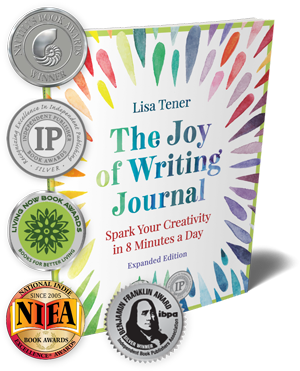
Editing a book proposal yesterday I observed a common problem–this author didn’t know what to emphasize in her chapter outlines. I found myself asking, ‘Who cares?” as I read through the first few chapter outlines. In fact, I’d already read chapters of her book and I did care very much–this book has a large potential audience who is desperate for the powerful tools this author has to offer. It just didn’t come across in the chapter outlines at all.
If you write your chapter outlines with the following perspective in mind, you’ll avoid that problem and come up with a compelling and motivating outline for your book proposal.
As your write about what’s in each chapter, keep in mind your readers’ biggest problems, challenges and goals. What benefits or results are they looking for? You might start your outline with, “The chapter begins with a story about x that illustrates y.” In this single sentence, you can capture some sense of either the problem, the benefits of your solution or both.
Chapter Outlines Should Highlight Readers’ Takeaways
Make sure to highlight the takeaways of each chapter:
* Will your readers reach a new understanding or perspective? Clarify.
* What new tools will readers have and what results may these tools help them produce in their lives or work?

* What features are included in the chapter (a sidebar that describes the latest research? a quotation, several exercises?)?
For a prescriptive book, it’s fine to bullet point. You don’t have to capture absolutely everything in the chapter–focus on what’s going to empower your readers and be most important to them. Your chapter also doesn’t need to teach agents and publishers the material. They just want to know that you have enough material, fresh material, that you address the needs of your readers, that it’s well organized, etc.
Writing a book proposal? Share your questions about chapter outlines and other book proposal issues below.



Lisa, this is such great advice, in a nutshell. I taught a business writing class at the MBA level and my students were always shocked when I told them to put their message up front, in the first sentence. The question to answer was: what is the bottom line? It’s a real craft to figure it what the core message is and say it. It’s well worth it.
Excellent advice. But writers have to finish their memoirs before trying to find a publisher. Once the manuscript has been rewritten and critique by many knowledgeable readers, how to choose what to include in outlines will be clear. Of course, getting feedback on the outline is also essential.
My comment above is based on the idea that I failed to include: a memoir should read like a novel, and like a novel, the only way to prove you can write one is to do it.
On Page 3 of “How to Write a Book Proposal” you state that “90% of nonfiction is sold with proposals”. If memoirs are sold mostly by proposal, can you kindly clarify the conflicting information I am reading?
How to write s book proposal book I seen theres one thats blue and one red which is best for a non-fiction book?
In writing a chapter summary for my memoir, I can’t seem to find anywhere if it should be written in first person like the memoir or in third person as most chapter outlines are.
Great question, Celeste. You would write in first person, like the memoir.
Great post Lisa. I am writing the l chapter outline for my first novel’s proposal. The narrative is in first person. My question is the same as Celeste’s. Should I write the chapter outline in first person or keep it in the third person.
please help.
IF it’s a novel, third person. If it’s a memoir, you can do first person.
Really helpful post especially re the first person or third person 🙂 I am wondering Lisa if you are familiar with the UK market? I live in Scotland and would be interested in exploring getting help with my book. Do you work with clients in the UK?
I am not as familiar. Try Julia McCutchen.